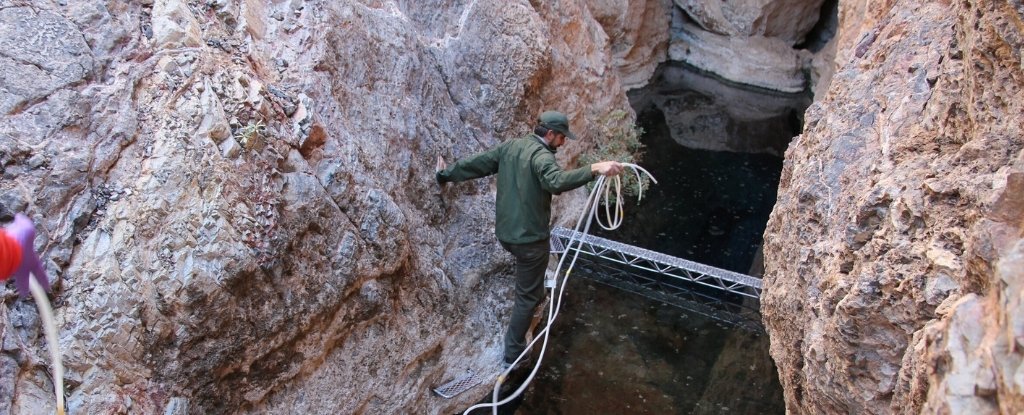Products You May Like
There’s an enormous variety of life thriving deep beneath Earth’s surface. A new analysis of two major groups of subsurface microbes has now revealed that their evolutionary path to life in the dark has been more curious than we expected.
In our planet’s first 2 billion years of existence, there was no oxygen in the atmosphere. Once the air on our blue planet changed, not all life forms adapted, with many microbes retreating into less oxygenated parts of the planet.
Patescibacteria and DPANN are two ubiquitous groups of such subsurface microbes – bacteria and archaea, respectively – that appear to have very simple genomes. This has led many to suspect that without the ability to breathe oxygen, these microbes might need to rely on complex interactions with other organisms to supplement their simple lifestyles.
Now, it seems we may not be giving them enough credit. New research indicates that instead of having a symbiotic dependency on other major groups of organisms, most Patescibacteria and DPANN live as completely free cells.
“These microbes [..] are really special, really exciting examples of the early evolution of life,” says Ramunas Stepanauskas, who studies microbial biology and evolution at the Bigelow Laboratory for Ocean Sciences.
“They may be remnants of ancient forms of life that had been hiding and thriving in the Earth’s subsurface for billions of years.”
Previous work on Patescibacteria and DPANN has gathered a small number of examples near the surface of the Earth, and mainly in North America, but this new study goes deeper and wider than ever before, analysing nearly 5,000 individual microbial cells from 46 locations around the globe, including a mud volcano on the bottom of the Mediterranean Sea, hydrothermal vents in the Pacific, and gold mines in South Africa.
“Our single cell genomic and biophysical observations do not support the prevailing view that Patescibacteria and DPANN are dominated by symbionts,” the authors write.
“Their divergent coding potential, small genomes, and small cell sizes may be a result of an ancestral, primitive energy metabolism that relies solely on [fermentation].”
Fermentation is one of the metabolic options living organisms have for breaking down glucose without the help of oxygen, and many life forms use fermentation for energy production, especially the microbes that don’t breathe air at all.
However, using fermentation is less efficient than breathing – it produces only 2 ATP per glucose compared to 38 ATP per glucose with aerobic respiration – so this type of metabolism comes with the cost of putting organisms in the metabolic slow lane.
Patescibacteria and DPANN are just fine with that, however. Based on the new analysis, the two groups contain no trace of what’s known as an electron transport chain, a metabolic process that makes energy by dumping electrons onto oxygen. Their relatively simple, potentially ancient survival tricks simply don’t need it.
Genomic research and direct experimental tests on samples representing the two groups showed no evidence of respiration, and close examination of cell-to-cell links revealed most were on their own, not attached to hosts like some of their surface cousins.
The authors can’t deny that some symbiotic relationships could have been shaken apart by human handling, but gentle mixing was attempted when sorting the cells.
Even if the team is underestimating cell-to-cell interactions, genomic analysis found no evidence of evolutionary enrichment from symbiotic relationships compared to other phyla.
Rather, genome content and lab analysis of cell physiology suggests these microbial groups contain few, if any, other ways of producing energy than fermentation.
“Our findings indicate that Patescibacteria and DPANN are ancient forms of life that may have never learned how to breathe,” says Stepanauskas.
“These two major branches of the evolutionary tree of life constitute a large portion of the total microbial diversity on the planet – and yet they lack some capabilities that are typically expected in every form of life.”
The study was published in Frontiers in Microbiology.
